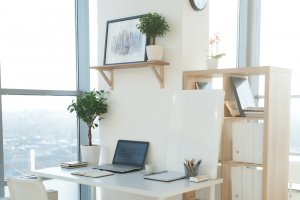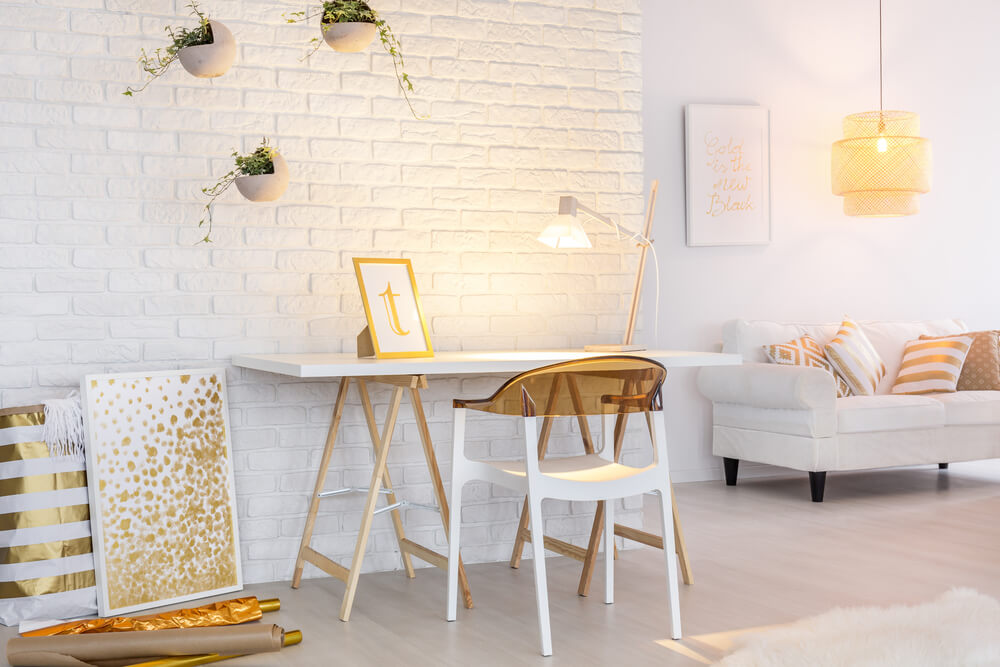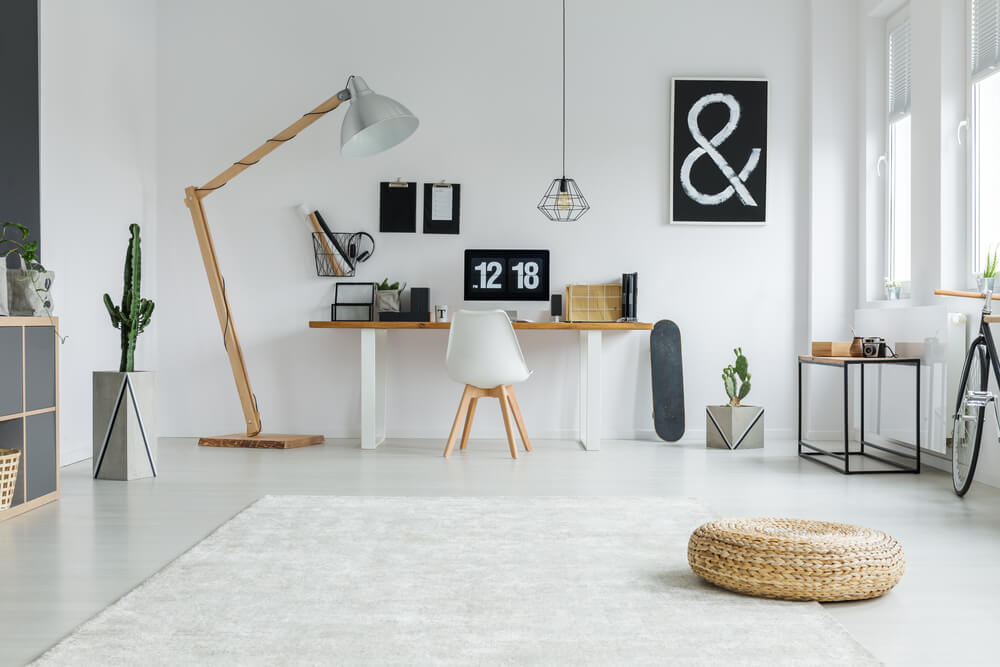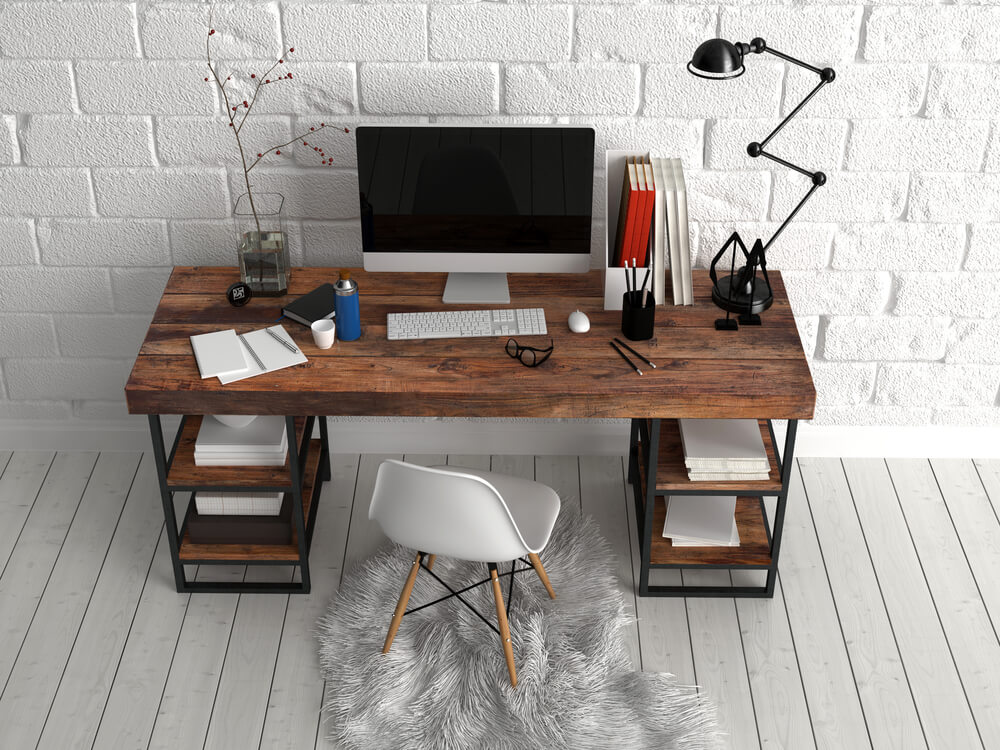Lighting Up Work and Study Areas at Home

Work and study areas need to have the right conditions to promote efficient habits. Lighting is one of the most important factors for creating these conditions. Without a strong light source that prevents visual fatigue, keeping an efficient work routine would be complicated.
So then, how can you create a setting with ideal, tranquil lighting for a work and study area? In our post today, read about our tips for creating the perfect lighting and why they work. Once you understand them, don’t think twice about putting them into practice!
The perfect lighting
Most work and study lamps use a neutral or cool (white) light. Neutral light is the best option because it best resembles natural light. Cool lights, however, are popular choices for darker rooms.
Use both types of light (neutral and cool) to set up the right kind of lighting for your work and study area.

It goes without saying that you should avoid fluorescent lights at any cost because they constantly flicker and tire you. In addition, they also disturb your concentration.
Furthermore, don’t forget to place your desk next to a natural light source such as a window.
This won’t only ensure good lighting during the day, but it’ll also keep you from turning on the lights, which will reduce electricity bills as a result.
Ideally, your desk should be facing a window. But if that’s not an option, try moving your desk as close to the window as possible.
LED technology
Most LED bulbs give off more light without wasting as much energy as the conventional bulb.
Additionally, they don’t take as long to reach their maximum intensity either. As a result, they offer plenty of light as soon as you turn on the switch.
These days many of us work at a desk. We need optimal lighting for optical health and efficiency as well. Thus, LED bulbs are the most sought-after option.
Flex lamps for work and study areas
Flex lamps are the most popular light fixture for work and study areas. The earliest models just featured a flexible or bendable arm.

But soon after, clip-on models started to roll out, allowing users to attach them to a desk or a shelf to save space and brighten their workspace at the same time.
A big selling-point of flex lamps is their flexible structure that allows users to point the light in various different directions.
But you should keep something in mind when it comes to flex lamps. If you’re right-handed, you should keep your lamp on your left-side. And if you’re left-handed, place your lamp on your right-side.
Modern flex lamps offer a feature that allows you to adjust the light intensity to best suit your needs.
Standing flex lamps are another great option for work and study areas. Standing models share the same characteristics as their desktop counterparts. Place them next to your desk and direct the light wherever you need it.
Finding the right place to work or study
In order to create the perfect lighting, you need to first look at the characteristics of a given space. Look for the area that’s the most suitable for working or studying in terms of space, acoustics and, of course, lighting.

We recommend the following areas for setting up a work area:
- a corner in the living room, next to a window
- the bedroom
- an unused area of the dining room
And we don’t recommend these areas:
- a transit area (such as a hallway)
- on a balcony (if you live in an apartment) or porch (house)
- the garden
To conclude
The more thought you put into the details, the more efficiently you can distribute your lights. And just as we explained above, knowing where to place your desk and lamp is key for maximum efficiency.
Contrary to popular belief, you don’t need expensive tools or gadgets to pull a workspace together. You just need to use what you have wisely and follow our tips.
Work and study areas need to have the right conditions to promote efficient habits. Lighting is one of the most important factors for creating these conditions. Without a strong light source that prevents visual fatigue, keeping an efficient work routine would be complicated.
So then, how can you create a setting with ideal, tranquil lighting for a work and study area? In our post today, read about our tips for creating the perfect lighting and why they work. Once you understand them, don’t think twice about putting them into practice!
The perfect lighting
Most work and study lamps use a neutral or cool (white) light. Neutral light is the best option because it best resembles natural light. Cool lights, however, are popular choices for darker rooms.
Use both types of light (neutral and cool) to set up the right kind of lighting for your work and study area.

It goes without saying that you should avoid fluorescent lights at any cost because they constantly flicker and tire you. In addition, they also disturb your concentration.
Furthermore, don’t forget to place your desk next to a natural light source such as a window.
This won’t only ensure good lighting during the day, but it’ll also keep you from turning on the lights, which will reduce electricity bills as a result.
Ideally, your desk should be facing a window. But if that’s not an option, try moving your desk as close to the window as possible.
LED technology
Most LED bulbs give off more light without wasting as much energy as the conventional bulb.
Additionally, they don’t take as long to reach their maximum intensity either. As a result, they offer plenty of light as soon as you turn on the switch.
These days many of us work at a desk. We need optimal lighting for optical health and efficiency as well. Thus, LED bulbs are the most sought-after option.
Flex lamps for work and study areas
Flex lamps are the most popular light fixture for work and study areas. The earliest models just featured a flexible or bendable arm.

But soon after, clip-on models started to roll out, allowing users to attach them to a desk or a shelf to save space and brighten their workspace at the same time.
A big selling-point of flex lamps is their flexible structure that allows users to point the light in various different directions.
But you should keep something in mind when it comes to flex lamps. If you’re right-handed, you should keep your lamp on your left-side. And if you’re left-handed, place your lamp on your right-side.
Modern flex lamps offer a feature that allows you to adjust the light intensity to best suit your needs.
Standing flex lamps are another great option for work and study areas. Standing models share the same characteristics as their desktop counterparts. Place them next to your desk and direct the light wherever you need it.
Finding the right place to work or study
In order to create the perfect lighting, you need to first look at the characteristics of a given space. Look for the area that’s the most suitable for working or studying in terms of space, acoustics and, of course, lighting.

We recommend the following areas for setting up a work area:
- a corner in the living room, next to a window
- the bedroom
- an unused area of the dining room
And we don’t recommend these areas:
- a transit area (such as a hallway)
- on a balcony (if you live in an apartment) or porch (house)
- the garden
To conclude
The more thought you put into the details, the more efficiently you can distribute your lights. And just as we explained above, knowing where to place your desk and lamp is key for maximum efficiency.
Contrary to popular belief, you don’t need expensive tools or gadgets to pull a workspace together. You just need to use what you have wisely and follow our tips.







